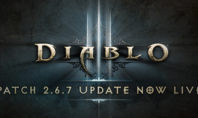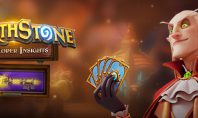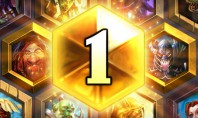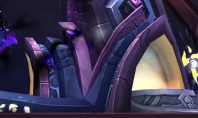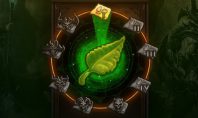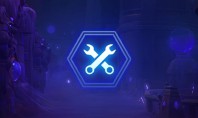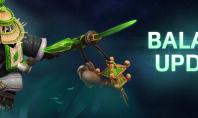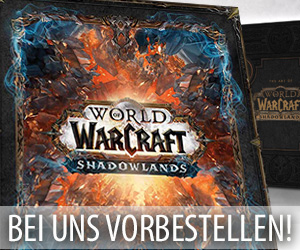Hearthstone: Die Entwickler erklären die Wertung für den Schlachtfeldmodus
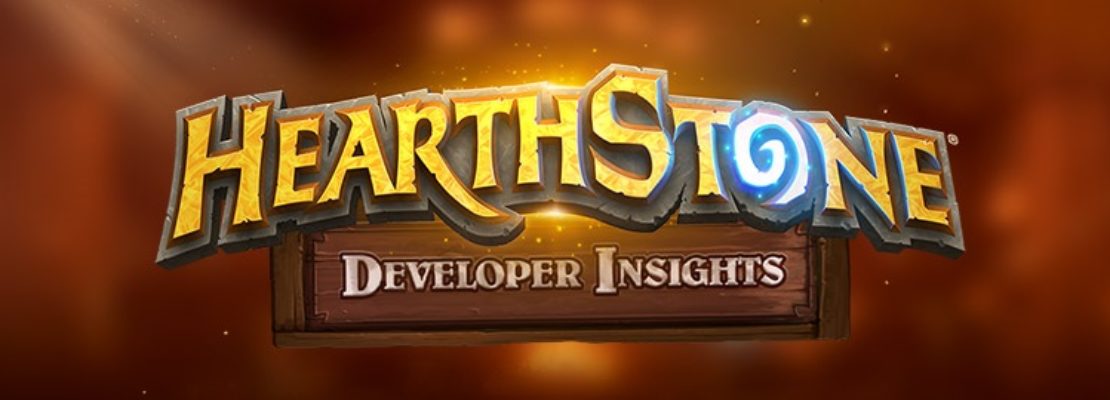
Um den in Hearthstone vorhandenen Schlachtfeldmodus auch für die ernsteren Spieler von Hearthstone interessant zu gestalten, haben die Entwickler von Hearthstone diesen Spielmodus mit einer eigenen Wertung ausgestattet, die daran interessierte Spieler durch regelmäßige Platzierungen in den Top 4 langsam in die Höhe treiben können. Auch wenn dieser Aspekt des Spiels recht positiv von der Community aufgenommen wird, so fragen sich aktuell aber dennoch viele Spieler, wie diese Wertung berechnet wird und die das Ganze genau funktioniert. Aufgrund dieser Anfragen veröffentlichten die Verantwortlichen im Verlauf des gestrigen Abends netterweise ein neues Entwicklerupdate auf ihrer offiziellen Communityseite, welches eine Vielzahl von Informationen über die Wertung in dem Schlachtfeldmodus von Hearthstone beinhaltete. Wer keine Lust hat diesen von Senior Data Scientist Tian Ding verfassten Beitrag selbst durchzulesen, der findet folgend eine grobe Zusammenfassung der wichtigsten Punkte.
Zusammenfassung des Beitrags:
- Die Wertung für den Schlachtfeldmodus spiegelt das Können eines Spielers wider.
- Die Wertung beeinflusst das Matchmaking. Spieler sollten immer sieben Mitspieler mit einer ähnlichen Wertung erhalten.
- Die Entwickler möchten erreichen, dass die meisten Spieler sich in der Mitte der Rangliste (4000) befinden.
- Am ersten Tag waren Spieler mit einer Wertung von 4200 besser als 77% der Community. Eine Wertung von mehr als 5000 machte einen Spieler besser als 99% der Fangemeinde.
- Die Wertung ist direkt mit dem unsichtbaren Wert „variance“ verbunden. Dieser Wert gibt an, wie sicher die Entwickler sich über die Wertung eines Spielers sind.
- Die „variance“ bei neuen Spielern ist sehr hoch, weil die Entwickler kaum Daten über diese Person besitzen. Nach einigen gespielten Runden sollte sich dieser Wert immer weiter reduzieren.
- Die Wertung und die „variance“ werden unter anderem dafür genutzt, um festzustellen, wie hoch die Chance auf den Sieg eines Spielers ist.
- Am Ende einer Runde wird die Wertung eines Spielers anhand von mehreren Faktoren verändert. Dazu gehören unter anderem die bisherige Wertung einer Person, die Wertungen der sieben Mitspieler, die eigene Platzierung, die errechnete Chance auf den Sieg, die „variance“ und einige nicht genannte Faktoren.
- Je höher die „variance“ eines Spielers ist, desto stärker sollten die Änderungen an der Wertung ausfallen. Diese größeren Änderungen sind vorhanden, weil die Entwickler die Spieler möglichst schnell auf die zu ihnen passende Wertung bringen möchten.
- Die Entwickler haben vor Kurzem einige Änderungen durchgeführt, die dafür sorgten, dass die Wertung eines Spielers sich auch mit einer sehr niedrigen „variance“ etwas stärker verändert. Vor diesen Anpassungen erhielten Spieler für ihren ersten Sieg in ihrer ersten Partie ca. 240 Punkte und für einen Sieg nach 150 gespielten Runden nur noch ungefähr 24 Punkte. Durch die vor einer Woche durchgeführten Anpassungen erhalten Spieler für ihren ersten Sieg in ihrer ersten Runde jetzt nur noch 195 Punkte und für einen Sieg nach 150 gespielten Runden ungefähr 98 Punkte.
- Es gibt aktuell auch noch ein System in dem Schlachtfeldmodus von Hearthstone, welches Spielern bei jeder Partie einen kleinen Bonus auf ihre erhaltenen Punkte gewährt. Dieses System ist bis zu einer Wertung von 6500 Punkten aktiv und soll sehr aktiven Spielern ein besseres Spielgefühl vermitteln.
- Die Entwickler haben absichtlich auf bekannte Algorithmen (Elo oder Glicko) für das Matchmaking verzichtet. Ihre internen Tests zeigten, dass ihr eigenes System in Runden mit acht Teilnehmern am schnellsten arbeitet und die besten Partien zusammenstellt.
Developer Insights: Personal Rating in Hearthstone Battlegrounds
Greetings! I’m Tian, a Senior Data Scientist on the Hearthstone team, and I’m here to talk about some science behind your rating in Hearthstone Battlegrounds!
After your first round of strategic tavern purchases, methodical minion placements, and triples upon triples, you’ll note that you’ve either earned or lost rating points based on your finishing place. After seeing this number change, you may ask yourself: what does this rating actually mean? And how did my rating get decided alongside my opponents?
I’m here to answer those questions – and more! – to help demystify the inner workings of your Battlegrounds rating.

What does this rating number mean?
Your rating in Hearthstone Battlegrounds is more than just a number. The value of your rating represents your skill level in Hearthstone Battlegrounds (with a higher value meaning you are more skilled). But it also helps us match you with seven other players of similar skill, helping make each game you play to feel as fair as possible.
What we want to accomplish with the rating system is that, as we look at the full player base of Hearthstone Battlegrounds, we’ll see most players in the middle of the “rating spectrum”. In Mathematical terms, the rating distribution follows a bell-shaped curve called normal distribution. In the way we designed our rating system, on the second day of Open Beta, if your rating was 4200, you were roughly more skilled than 77% of the players playing Battlegrounds; if your rating was 5000, this would be better than 99% of the players.
How does my rating get updated after each match?
One of the important goals of the rating system is to quickly identify your actual skill and thus create matches that will feel competitive and fair to you. In order to achieve that, let me introduce you to another concept: variance.
Variance is a number that’s associated with your rating but not explicitly shown to you. This value represents how confident we are about your rating. When you are completely new to Battlegrounds, we’re not sure about your actual skill level because you haven’t played many matches. We don’t have much data on how your performance changes over multiple matches, so your variance is pretty high. After you have played some matches, your variance is likely to drop as we are more confident what your actual rating is. However, if we are looking at a single match, your variance could go up if the result is not what we expected. For example, if a high rating player loses to some players whose rating is much lower than theirs, it may result an increase of their variance.
Once we know each of the eight players’ ratings and variance, we need to calculate the win chance of each player against the seven other players in the match. During each calculation, all the factors we have discussed before are factored in. When all is said and done, this is a lot of calculations: 56 to be precise!
Now let’s return to how ratings get updated. After each match, your rating gets updated based on a combination of your rating, your opponents’ ratings, the place you finish in the match, your predicted win chance, your variance, and a few other factors. Generally speaking, the bigger your variance, the more you’ll see your rating change after the match. When you first start playing Battlegrounds we don’t have much historical data about how skilled you are, so our main goal is to quickly put you in an appropriate rating range. You’ll see higher variance and bigger rating changes after each match. After you’ve played quite a few games, we will have more and more data to inform us of your proper rating and your rating will not change as drastically.
We recently made some updates to how rating is calculated when you start playing Battlegrounds. We want to ensure the ratings don’t swing too wildly and end up putting people in the wrong rating groupings, and we also want to ensure that you are getting closer to your correct MMR each time you play a match. We increased your rating gains and losses once your rating has been established when you’ve played enough games so you will see more movement in your rating.
Assuming all of your opponents have the exact same rating as you, in the original system you got roughly 240 points for a first place on your first game and 24 pts for a first place on your 150th game or after. With the November 19th changes, you will get roughly 195 pts for a first place on your first game and 98 pts for a first place on your 150th game or after. I also want to point out here that the updating formula depends on many factors as you can see above. When we are looking at actual rating updates, we do not only pick one factor. Keep in mind that this does not mean more forward progression necessarily. If you are at your correct rating you will move up and down but generally stay at the same rating after enough games.
We’ve also added a very small progression adjustment to your rating after each game. This adjustment always has a positive value and depends on your current rating unless you reach 6500 rating or above. The lower your rating is, the larger the adjustment. Therefore, in theory, playing more games in Battlegrounds will give you a small advantage in terms of “boosting” your rating (if you are below 6500 rating). Bear in mind that this is true whether you win or lose; think of it as a consistent progression adjustment that gives you a small positive bump each time you play Battlegrounds.
As a final note, for our algorithm experts out there, I also wanted to clarify why some widely used matchmaking algorithms such as Elo or Glicko are not a good option for us. We ran many simulations and the results showed that our algorithm had the fastest runtime (ensuring that matchmaking happens quickly) and the highest accuracy (ensuring that you have a more positive play experience). Elo and Glicko are also primarily designed for 2 player games, not 8 player games.
We hope you enjoy Hearthstone Battlegrounds! We are constantly listening to your feedback – feel free to share any matchmaking and rating comments with us. We’ll see you all in the Tavern!
Note: We will be moving to a new comment system for our blogs in the middle of December. At that time, all future blog discussion will take place in our official forums. All historical blog comments will become unavailable.









